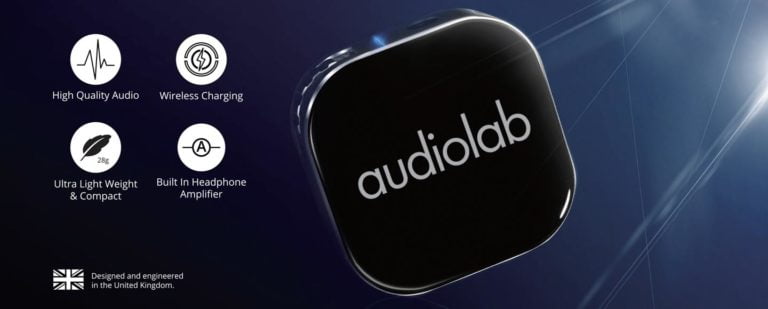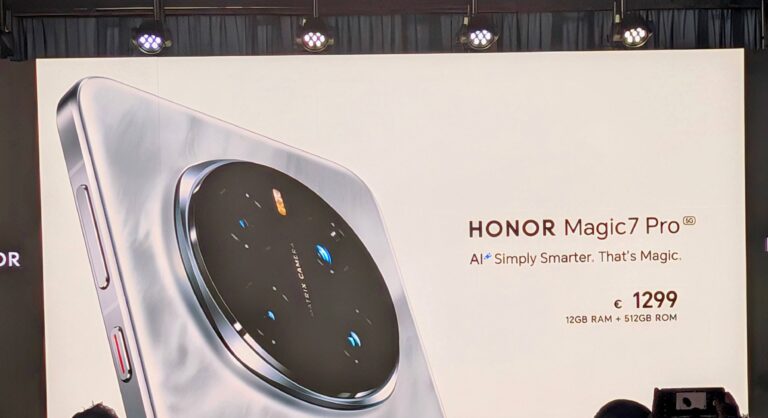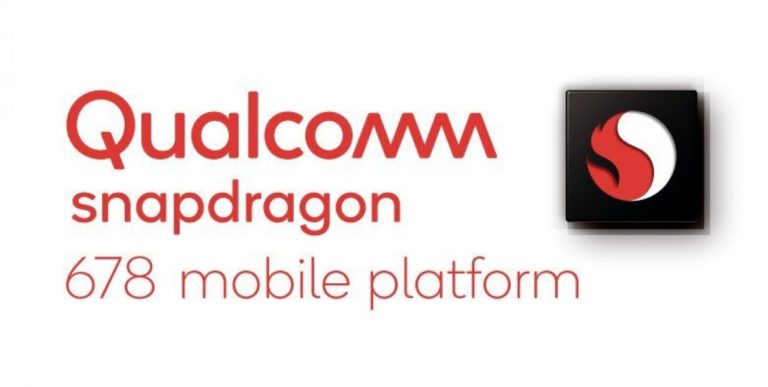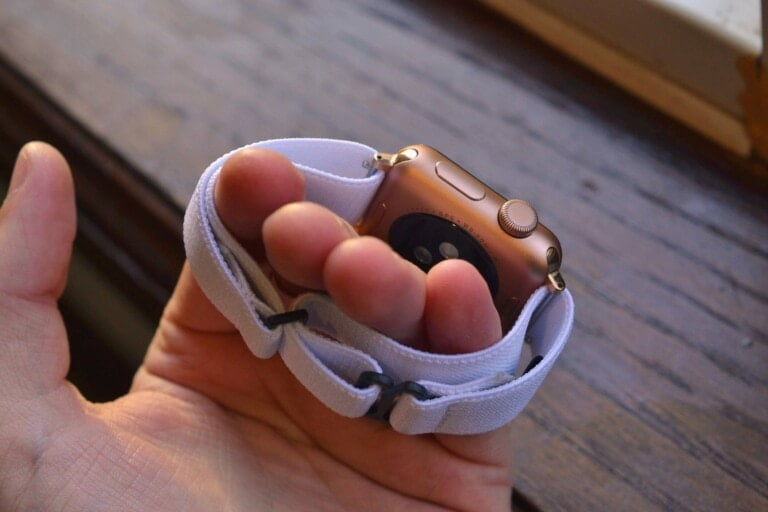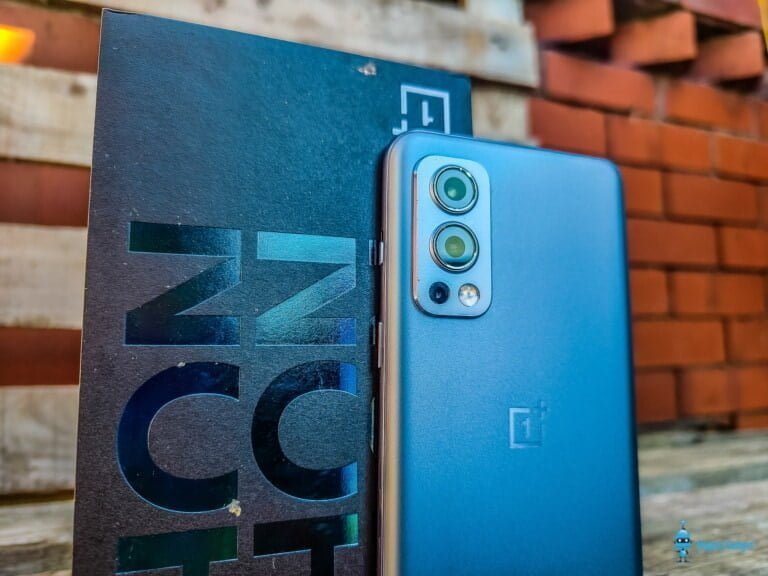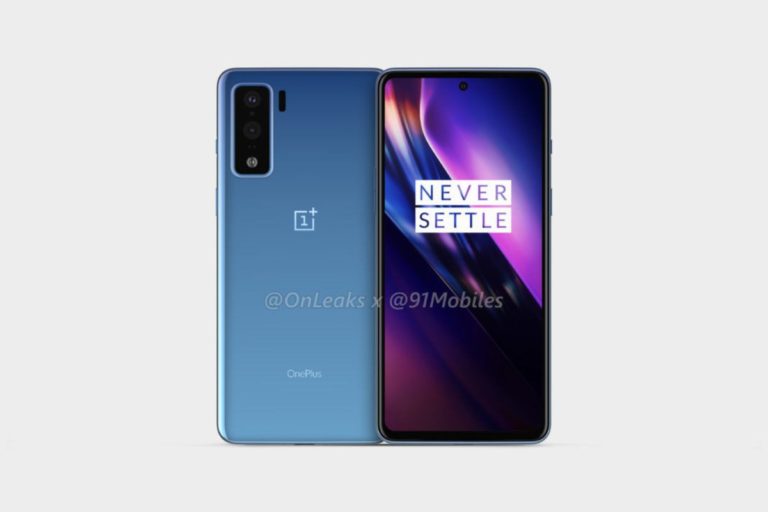Any links to online stores should be assumed to be affiliates. The company or PR agency provides all or most review samples. They have no control over my content, and I provide my honest opinion.
Huawei launch two flagship devices a year, which some may say is excessive, but with Huawei’s exponential growth in market share, it has clearly worked quite well for them.
The Huawei release cycle follows a trend, with the Mate series introducing the latest chipset pushing the boundaries of what I phone can do. Then the P series focuses on the camera, and it could be said that Huawei has been the one brand that has made the biggest difference in smartphone photography in recent years.
The Huawei P30 Pro continues this tradition, it maintains the three cameras from the P20 Pro (not including the TOF sensor) but refines the system offering class-leading zoom functionality and the best low light performance I have ever seen.
So how does the P30 Pro compare with the last three flagship phones from Huawei?
Chipset, RAM and Storage
Typical to the release cycle, most of the components are similar to the Mate 20 Pro, with the HiSilicon Kirin 980 powering the device and the same massive 4200 mAh battery. In contrast, the P20 Pro has the older, but still excellent Hisilicon Kirin 970 (10 nm). The P30 Pro now bumps up the RAM from 6GB on the older phones to 8GB.
Both the Mate 20 Pro and P30 have the new nanoSD storage option that Huawei has developed. The cards cost a fortune, but at least you have an opportunity to upgrade
Display
The P30 Pro actually has a lower resolution display compared to the Mate 20 Pro at just 1080 x 2340 pixels, 19.5:9 ratio (~398 ppi density) and this is slightly larger than the P20 Pro which had 1080 x 2240 pixels, 18.7:9 ratio
Thankfully the large notch is gone, and there is a small waterdrop style notch which hides the camera.
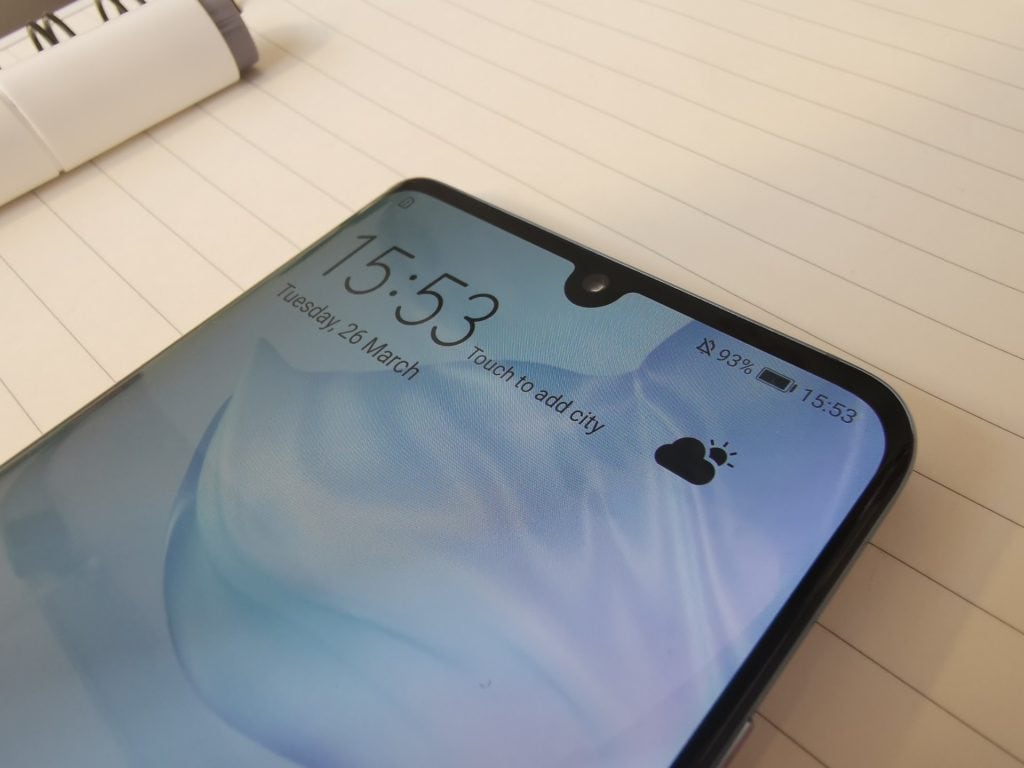
The P30 Pro is the largest phone of the three being 6.47 inches compared to 6.39 inches and 6.1 inches.
Both the Mate 20 Pro and P30 Pro have under display fingerprint readers but the new phone is slightly lower, and Huawei claims that it has been improved.
Cameras
This is where the significant changes happen, which on paper don’t look all that big. All three phones have 40MP/20MP/8MP but the Mate 20 Pro ditched the black and white lens, and this remains on the P30 Pro.
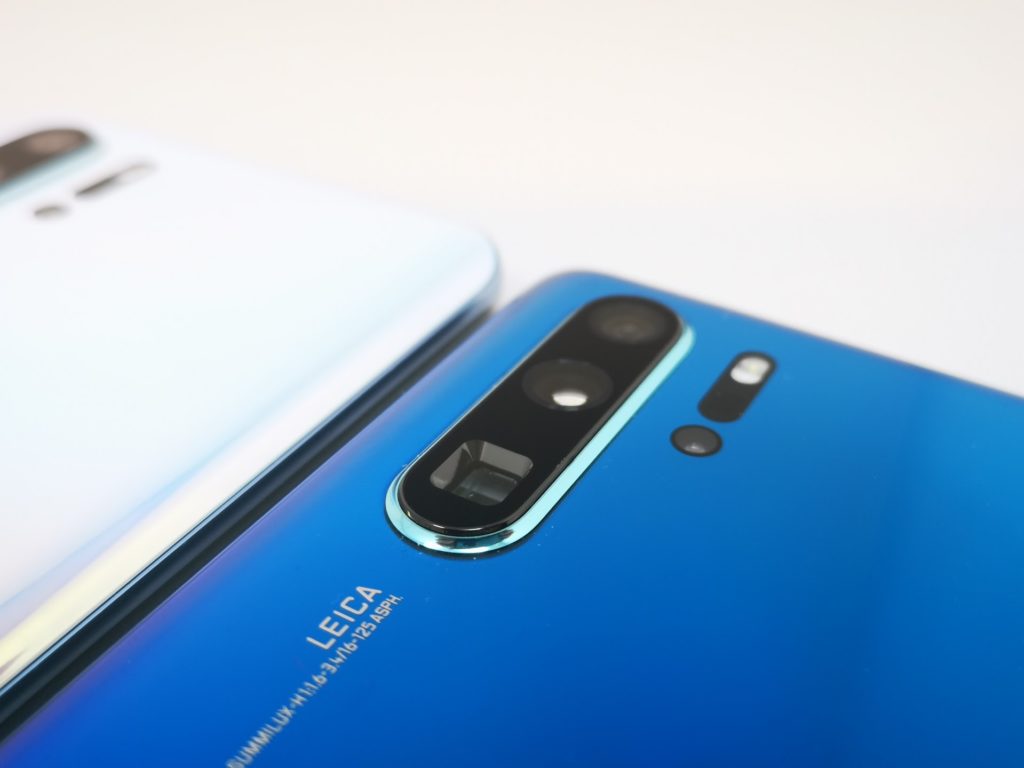
The 8MP telephoto lens was 3x optical with the P30 and Mate 20 but now ups it to 5x thanks to a clever periscope zoom.
The camera now uses Red Yellow Blue for its colours, and this apparently helps it achieve the astonishing low light performance with an ISO of 409600. For me this is the biggest improvement you will see on this phone.
The front camera of the new phone is now 32 MP, f/2.0 (wide) compared to the 24 MP, f/2.0 26mm (wide) of the previous phones.
Price
With the P30 Pro just launching it comes at its full RRP which at the time of writing is not confirmed, but it should be around £850. If you pre-order you will almost certainly get something decent for free, initial reports suggest a Sonos One, so this can reduce the effective price by £200 if it is something you were planning on buying. Or you could probably sell it for £150+.
In comparison, the Dual SIM international version of the Huawei Mate 20 Pro is just £673 from O2.
The P20 Pro can be had for just £479.99 from Three which is an absolute bargain.
[content-egg module=Amazon template=list]
Overall
If you want one of the best phones of the year then this is likely to be it, it takes all the best bits of the Mate 20 Pro and improves the camera even further. Based on my brief time with it the low light performance is astonishing, and this is something that will likely have a more significant effect on your photos than being able to zoom in a little further.
However, you can’t ignore the price differences, for the average user either of the other phones will arguably be the more sensible buy. For your casual user that takes the occasional photo, apart from the low light performance, I doubt you would notice the difference. If the pre-order bonus is true, then this does reduce the effective cost of the new phone, and in this case I would choose the P30 Pro over the other two devices regardless.
| Huawei | P30 Pro | Mate 20 Pro | P20 Pro |
|---|---|---|---|
| Announced | 2019, March | 2018, October | 2018, March |
| Dimensions | - | 157.8 x 72.3 x 8.6 mm (6.21 x 2.85 x 0.34 in) | 155 x 73.9 x 7.8 mm (6.10 x 2.91 x 0.31 in) |
| Weight | - | 189 g (6.67 oz) | 180 g (6.35 oz) |
| Build | Front/back glass (Gorilla Glass 5), aluminum frame | Front/back glass & aluminum frame | |
| SIM | Single SIM (Nano-SIM) or Hybrid Dual SIM (Nano-SIM, dual stand-by) | Nano-SIM | Nano-SIM |
| IP68 dust/water resistant (up to 2m for 30 mins) | IP68 dust/water resistant (up to 2m for 30 mins) | IP67 dust/water resistant (up to 1m for 30 mins) | |
| Type | OLED capacitive touchscreen, 16M colors | OLED capacitive touchscreen, 16M colors | OLED capacitive touchscreen, 16M colors |
| Size | 6.47 inches, 102.8 cm2 | 6.39 inches, 100.2 cm2 (~87.9% screen-to-body ratio) | 6.1 inches, 93.9 cm2 (~82.0% screen-to-body ratio) |
| Resolution | 1080 x 2340 pixels, 19.5:9 ratio (~398 ppi density) | 1440 x 3120 pixels, 19.5:9 ratio (~538 ppi density) | 1080 x 2240 pixels, 18.7:9 ratio (~408 ppi density) |
| Protection | HDR10 | DCI-P3 | |
| DCI-P3 | HDR10 | ||
| OS | Android 9.0 (Pie); EMUI 9 | Android 9.0 (Pie); EMUI 9 | Android 8.1 (Oreo), upgradable to Android 9.0 (Pie); EMUI 9 |
| Chipset | HiSilicon Kirin 980 (7 nm) | HiSilicon Kirin 980 (7 nm) | Hisilicon Kirin 970 (10 nm) |
| CPU | Octa-core (2x2.6 GHz Cortex-A76 & 2x1.92 GHz Cortex-A76 & 4x1.8 GHz Cortex-A55) | Octa-core (2x2.6 GHz Cortex-A76 & 2x1.92 GHz Cortex-A76 & 4x1.8 GHz Cortex-A55) | Octa-core (4x2.4 GHz Cortex-A73 & 4x1.8 GHz Cortex-A53) |
| GPU | Mali-G76 MP10 | Mali-G76 MP10 | Mali-G72 MP12 |
| Card slot | NM (Nano Memory), up to 256GB (uses SIM 2) | NM (Nano Memory), up to 256GB | No |
| Internal | 128/256/512 GB, 8 GB RAM | 128 GB, 6 GB RAM | 128 GB, 6 GB RAM |
| Modules | 40 MP, f/1.6, (wide), 1/1.7", PDAF/Laser AF, OIS | 40 MP, f/1.8, 27mm (wide), 1/1.7", PDAF/Laser AF | 40 MP, f/1.8, 27mm (wide), 1/1.7", OIS, PDAF/Laser AF |
| 20 MP, f/2.2, 16mm (ultrawide), 1/2.7", PDAF/Laser AF | 20 MP, f/2.2, 16mm (ultrawide), 1/2.7", PDAF/Laser AF | 20 MP B/W, f/1.6, 27mm (wide), 1/2.7", OIS, PDAF/Laser AF | |
| Periscope 8 MP, f/3.4, 80mm (telephoto), 1/4", 5x optical zoom, OIS, PDAF/Laser AF | 8 MP, f/2.4, 80mm (telephoto), 1/4", 5x optical zoom, OIS, PDAF/Laser AF | 8 MP, f/2.4, 80mm (telephoto), 1/4", 3x optical zoom, OIS, PDAF/Laser AF | |
| TOF 3D camera | |||
| Features | Leica optics, dual-LED dual-tone flash, panorama, HDR | Leica optics, dual-LED dual-tone flash, panorama, HDR | Leica optics, LED flash, HDR, panorama |
| Video | 2160p@30fps, 1080p@60fps, 1080p@30fps (gyro-EIS), 720p@960fps | 2160p@30fps, 1080p@60fps, 1080p@30fps (gyro-EIS), 720p@960fps | 2160p@30fps, 1080p@60fps, 1080p@30fps (gyro-EIS), 720p@960fps |
| Modules | 32 MP, f/2.0, (wide) | 24 MP, f/2.0, 26mm (wide) | 24 MP, f/2.0, 26mm (wide) |
| Features | HDR | HDR | Leica optics |
| Video | 1080p@30fps | 1080p@30fps | 1080p@30fps |
| Loudspeaker | Yes | Yes, with stereo speakers | Yes, with stereo speakers |
| 3.5mm jack | No | No | No |
| 32-bit/384kHz audio | 32-bit/384kHz audio | 32-bit/384kHz audio | |
| Active noise cancellation with dedicated mic | Active noise cancellation with dedicated mic | Active noise cancellation with dedicated mic | |
| WLAN | Wi-Fi 802.11 a/b/g/n/ac, dual-band, DLNA, Wi-Fi Direct, hotspot | Wi-Fi 802.11 a/b/g/n/ac, dual-band, DLNA, Wi-Fi Direct, hotspot | Wi-Fi 802.11 a/b/g/n/ac, dual-band, WiFi Direct, hotspot |
| Bluetooth | 5.0, A2DP, aptX HD, LE | 5.0, A2DP, aptX HD, LE | 4.2, A2DP, LE, EDR, aptX HD |
| GPS | Yes, with dual-band A-GPS, GLONASS, BDS, GALILEO, QZSS | Yes, with dual-band A-GPS, GLONASS, BDS, GALILEO, QZSS | Yes, with A-GPS, GLONASS, GALILEO |
| NFC | Yes | Yes | Yes |
| Infrared port | No | Yes | Yes |
| Radio | No | No | No |
| USB | Type-C 1.0 reversible connector | 3.1, Type-C 1.0 reversible connector, USB On-The-Go | 3.1, Type-C 1.0 reversible connector |
| Sensors | Face ID, fingerprint (under display), accelerometer, gyro, proximity, barometer, compass | Face ID, fingerprint (under display), accelerometer, gyro, proximity, barometer, compass | Fingerprint (front-mounted), accelerometer, gyro, proximity, compass, color spectrum |
| Non-removable Li-Po 4200 mAh battery | Non-removable Li-Po 4200 mAh battery | Non-removable Li-Po 4000 mAh battery | |
| Charging | Fast battery charging 40W | Fast battery charging 40W (70% in 30 min) | Fast battery charging 4.5V/5A 22.5W (58% in 30 min) |
| Fast wireless charging 15W | Fast wireless charging 15W | ||
| Power bank/Reverse wireless charging | Power bank/Reverse wireless charging | ||
| Colors | Black, Ice White, Aurora Blue, Sunrise Red | Emerald Green, Midnight Blue, Twilight, Pink Gold, Black | Black, Gold |
| Price | About £855 | £735 SIM Free Amazon | £519 SIM free Amazon |
I am James, a UK-based tech enthusiast and the Editor and Owner of Mighty Gadget, which I’ve proudly run since 2007. Passionate about all things technology, my expertise spans from computers and networking to mobile, wearables, and smart home devices.
As a fitness fanatic who loves running and cycling, I also have a keen interest in fitness-related technology, and I take every opportunity to cover this niche on my blog. My diverse interests allow me to bring a unique perspective to tech blogging, merging lifestyle, fitness, and the latest tech trends.
In my academic pursuits, I earned a BSc in Information Systems Design from UCLAN, before advancing my learning with a Master’s Degree in Computing. This advanced study also included Cisco CCNA accreditation, further demonstrating my commitment to understanding and staying ahead of the technology curve.
I’m proud to share that Vuelio has consistently ranked Mighty Gadget as one of the top technology blogs in the UK. With my dedication to technology and drive to share my insights, I aim to continue providing my readers with engaging and informative content.


